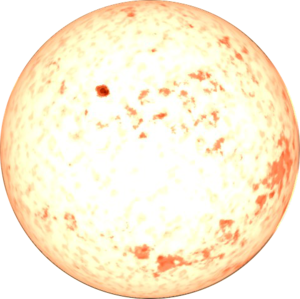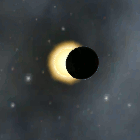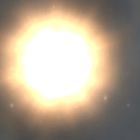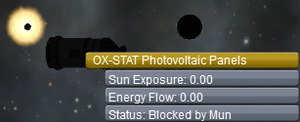Light

Light makes celestial bodies and parts visible to the human eye and thus the player. There are two sources of light:
- Natural
- Artificial
There is currently only one natural source of light, which is Kerbol, the central star of the Kerbol System. It can power solar panels which generate electric charge. It is also possible to add artificial sources of light like electric lights to make parts of it visible while being in the shadow. All celestial bodies, except for Kerbol, throw a shadow behind them which is perceived as night when being on the surface.
Eclipse
There are also eclipses possible, where a celestial body passes in front of Kerbol blocking it fully or partially. As of 0.21.1[outdated] it doesn't get dark, but solar panels won't generate electricity. To determine how complete a body can eclipse Kerbol the distance and inclination from the viewed object and the eclipsing body relative to Kerbol are important. A body can fully eclipse Kerbol only if it is large and close enough to appear as large as Kerbol, which is expressed as angular or apparent size which is how much of the view port is occupied by the body. From Kerbin's surface the Mun has an apparent size of 1.91° and Kerbol has a size of about 2.2°, so the Mun can almost completely eclipse Kerbol. As both Kerbin and Mun don't have any inclination every time the Mun is in between Kerbin and Kerbol an eclipse occur. This is almost every orbit: As Kerbin is also orbiting Kerbol, the Mun has to move a little further to be between both bodies again resulting in the synodic period.
Also partially eclipses render the solar panels useless.[specify]
Intensity
The intensity of the light varies depending on the distance. In the real-word it follows the inverse-square law, resulting in four times the intensity when halving the distance. But in Kerbal Space Program the intensity is following a spline curve of 3 piecewise cubics defined from 4 points:
| Distance (m) | Power | Example |
|---|---|---|
| 0 | 10× | |
| 13,599,840,256 | 1× | Kerbin's orbit |
| 68,773,560,320 | 0.5× | Jool's semi-major axis |
| 206,000,000,000 | 0× | Almost 3x Jool's orbit |


